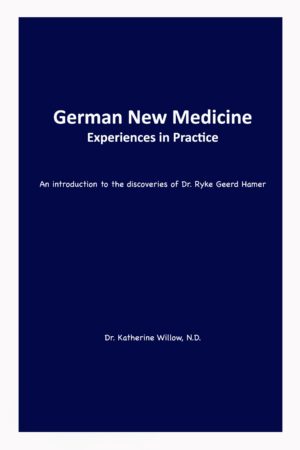Ask a Naturopathic Doctor – Redefining Brain Cancer
Katherine Willow N.D.
Brain cancers are relatively uncommon in adults, accounting for 2% of cancers world-wide but second only to the incidence of leukemia in children with a rate of 20-25% of childhood cancers. There are a variety of types of tumours depending on the kinds of cells involved, each with its own prognosis.
In a brief summary of the approach by mainstream medicine, brain cancers are considered abnormal growths that start primarily in the brain or spread from another cancer in the body (metastases). They can be safe and left alone or fast-growing and needing treatment, usually surgery, radiation and chemotherapy. Prognosis can be decades or months. Symptoms vary depending on the location of the tumour and whether it grows enough to create pressure in the brain.
Forty years ago in Germany a physician named Dr Geerd Hamer discovered marks on brain catscans that led to a radically new way of understanding brain cancers and disease in general. He eventually called his discoveries German New Medicine.
In short, he found that the brain is immediately affected when a shock occurs, resulting in a target ring, a series of concentric circles that can be seen on a catscan. Cell loss or ulceration causes these lesions.
The location of the rings is related to the nature of the shock. For instance, sudden worry for a loved one in a woman will affect her breast gland relay and stimulate growth in a gland on one side. The side is determined by the kind of relationship involved: mother and children worries affect the non-dominant side, for most of us the left; worry about anyone else will affect the dominant side, for most of us the right.
For each shock, there will be a mark on the brain and symptoms in the organ or tissues affected by that area in the brain. Often we don’t notice this; many of the organ/tissue results are asymptomatic or below our radar and we resolve the shock without any obvious physical symptoms.
Back to the brain: when the shock is resolved, the rings fill in with new cells which eventually re-integrate with the existing brain tissue, leaving a small mark. Most often this process goes unnoticed unless the shock is large, in which case the rings are bigger, affect more tissue and could cause symptoms.
It is this tissue regrowth during the healing phase of the rings that receives a diagnosis of brain cancer.
When one considers that these lesions are not a disease but a process of repair, it is understandable why treatments for brain cancers are often unsuccessful. If the person is vital, their brain cells will keep attempting to finish healing the damage from the shock; this is interpreted as a cancer recurrence, resulting in more treatment and strain to a person’s immune system.
Even if the original healing process is completed, the damage from the treatments themselves, especially the radiation, will at some point require a new healing process which will again be understood as disease and treated. It is not uncommon for brain cancer patients to undergo multiple surgeries and rounds of chemo-therapy and radiation in this frustrating cycle.
This leaves us with the question of treatment within this new paradigm.
German New Medicine is not a treatment but a revised understanding of medicine. Each patient needs to be individually assessed to determine the most intelligent treatment plan. This could be mainstream medicine and/or alternative treatments, or even taking a wait and see position to ride out the healing phase.




